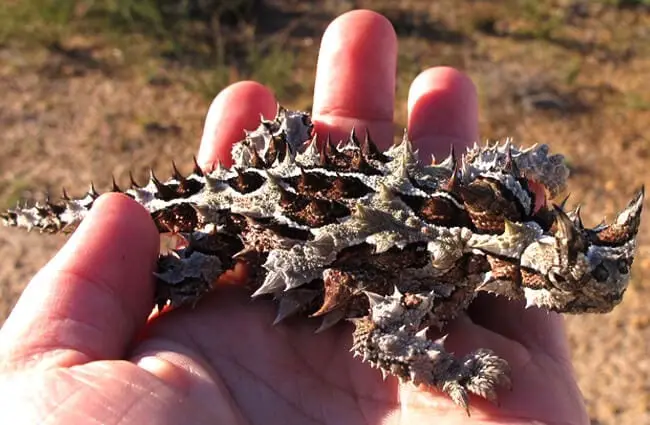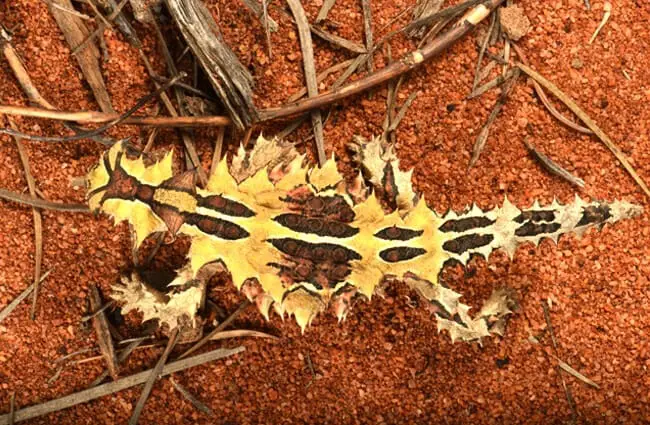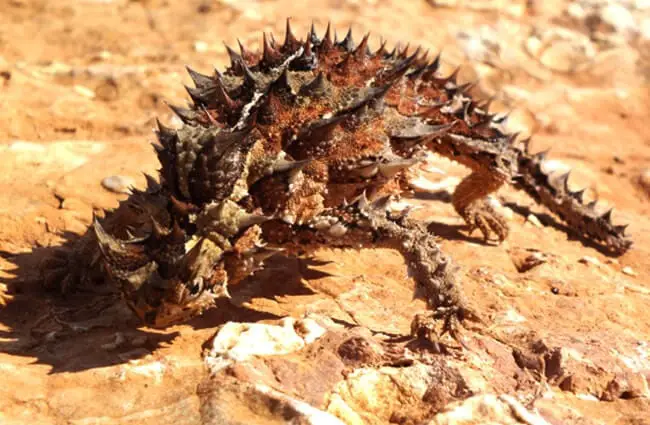The Australian outback harbors a creature of myth and marvel, a living testament to the power of adaptation, the Moloch, more commonly known as the Thorny Devil. This small, spiky reptile is not merely a fascinating specimen for zoologists, but a crucial thread in the desert ecosystem and a cultural icon for Indigenous Australians. This comprehensive guide delves into every facet of the Moloch’s life, from its unique hunting strategy to its complex reproductive behavior, offering insights for students, animal enthusiasts, and anyone captivated by the wonders of the natural world.
A Portrait of the Thorny Devil
The Moloch (Moloch horridus) is a lizard renowned for its extraordinary appearance. Covered in conical spines, it seems almost sculpted from the very landscape it inhabits. These spines aren’t for aggression, but serve primarily as a defense mechanism against predators and to collect water. Adults typically reach a length of 15 to 20 centimeters, and weigh between 60 and 120 grams. Their coloration varies depending on their habitat and mood, ranging from sandy browns and yellows to reddish or purple hues. This allows them to blend seamlessly with the desert environment, making them masters of camouflage.

Habitat and Distribution
The Moloch is endemic to arid and semi-arid regions of central Australia. Its range extends across much of Western Australia, South Australia, the Northern Territory, and parts of Queensland and New South Wales. They thrive in sandy, loamy, or rocky deserts and scrublands, preferring areas with sparse vegetation and access to ant nests. These lizards are remarkably well adapted to survive in extreme temperatures and prolonged droughts, relying on a suite of physiological and behavioral strategies.
Diet and Hunting Strategies
Despite its fearsome appearance, the Moloch is a relatively docile creature with a highly specialized diet. It is almost exclusively an ant eater, consuming thousands of ants each day. This specialized diet has shaped its unique morphology and hunting behavior. The Moloch does not actively chase its prey. Instead, it stands perfectly still, relying on its camouflage to blend in with the surroundings. Ants, attracted by the lizard’s spines (which have microscopic grooves that channel water toward its mouth), crawl onto its body, unwittingly becoming a meal. The lizard then rapidly flicks its sticky tongue to capture the ants, pulling them into its mouth.

Water Acquisition: A Desert Survival Masterclass
Water is, obviously, a precious resource in the arid Australian outback. The Moloch has developed an ingenious system for acquiring moisture. Its spiny skin isn’t just for defense and camouflage; the spines also serve as channels for collecting water. Water condenses on the cooler skin surface during the night, and the spines guide it toward the lizard’s mouth via capillary action. This allows the Moloch to absorb water directly through its skin, supplementing the moisture obtained from the ants it consumes. Furthermore, the lizard can burrow into the sand to reach cooler, more humid layers, providing additional relief from the harsh desert heat.

Reproduction and Life Cycle
Molochs are oviparous, meaning they reproduce by laying eggs. The breeding season typically occurs after periods of rainfall, during the warmer months. Males engage in elaborate courtship displays, involving head bobbing and dewlap extensions, to attract females. After mating, the female lays a clutch of 8 to 10 eggs in a burrow dug into the sand. The eggs incubate for approximately 65 to 75 days. Upon hatching, the young Molochs are miniature versions of their parents, immediately capable of independent foraging and survival. They grow relatively slowly, reaching sexual maturity at around 3 to 5 years of age. Their lifespan in the wild is estimated to be between 15 and 20 years.

Ecological Role and Interactions
The Moloch plays a vital role in the desert ecosystem. As a specialized ant eater, it helps regulate ant populations, preventing them from becoming overly abundant. This, in turn, benefits other species that compete with ants for resources. Molochs are preyed upon by larger reptiles, such as goannas, and carnivorous birds, like raptors. They also contribute to nutrient cycling through their waste products. Their presence or absence can serve as an indicator of ecosystem health. The Moloch’s unique adaptations make it a fascinating subject for ecological studies, providing insights into the evolutionary pressures shaping desert life.
Moloch and Human Culture
For Indigenous Australians, the Moloch holds significant cultural importance. It features prominently in Dreamtime stories and traditional artwork, often associated with creation myths and spiritual beliefs. The lizard is revered for its resilience, adaptability, and connection to the land. Traditional knowledge about the Moloch’s behavior and habitat is passed down through generations, reflecting a deep understanding of the desert environment. Modern conservation efforts increasingly recognize the importance of incorporating Indigenous knowledge into management strategies.

Encountering a Moloch in the Wild & Conservation
If you are fortunate enough to encounter a Moloch in the wild, observe it from a respectful distance. Avoid handling the lizard, as this can cause stress and damage its delicate skin. Be particularly cautious when driving in Moloch habitat, as they often bask on roads to absorb heat. Slow down and be vigilant. Populations are considered stable but are threatened by habitat loss, introduced predators (like cane toads and foxes), and altered fire regimes. Conservation efforts focus on protecting critical habitat, controlling introduced predators, and promoting sustainable land management practices.
For the Zookeeper: Caring for Moloch in Captivity
Caring for Moloch in a captive setting requires meticulous attention to detail. A spacious enclosure with a substrate of sand and loose soil is essential, allowing the lizard to burrow. Provide a basking spot with a temperature gradient, ensuring the lizard can regulate its body temperature. Diet should consist of live ants, carefully sourced and provided in appropriate quantities. Water should be available through both a shallow dish and by misting the enclosure to facilitate skin absorption. Careful monitoring of health, including regular veterinary checkups, is crucial. Avoid overcrowding and provide ample opportunities for enrichment to stimulate natural behaviors.

The Moloch, a true icon of the Australian outback, embodies the remarkable power of adaptation and the delicate balance of desert ecosystems. Its unique morphology, specialized diet, and ingenious water acquisition strategies make it a fascinating subject for scientific study and a source of wonder for all who encounter it. By understanding and appreciating this remarkable creature, we can contribute to its conservation and ensure its survival for generations to come.

![Red Angus Closeup of a beautiful Red Angus cowPhoto by: U.S. Department of Agriculture [pubic domain]https://creativecommons.org/licenses/by/2.0/](https://animals.net/wp-content/uploads/2020/03/Red-Angus-4-238x178.jpg)




![Red Angus Closeup of a beautiful Red Angus cowPhoto by: U.S. Department of Agriculture [pubic domain]https://creativecommons.org/licenses/by/2.0/](https://animals.net/wp-content/uploads/2020/03/Red-Angus-4-100x75.jpg)

